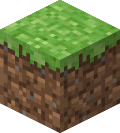146
you are viewing a single comment's thread
view the rest of the comments
view the rest of the comments
this post was submitted on 07 Jun 2024
146 points (100.0% liked)
games
20507 readers
377 users here now
Tabletop, DnD, board games, and minecraft. Also Animal Crossing.
-
3rd International Volunteer Brigade (Hexbear gaming discord)
Rules
- No racism, sexism, ableism, homophobia, or transphobia. Don't care if it's ironic don't post comments or content like that here.
- Mark spoilers
- No bad mouthing sonic games here :no-copyright:
- No gamers allowed :soviet-huff:
- No squabbling or petty arguments here. Remember to disengage and respect others choice to do so when an argument gets too much
founded 4 years ago
MODERATORS
Also, I swear I'm not trying to debatebro, but this question has been picking at my mind for a while: why is it considered acceptable to use procedurally generated content in level/map design (as many roguelikes do) but not in any other aspect of game development?
My first instinct is that it's because everything can still be broken down into bespoke parts. You're not hooking up to the Copyright Infringement Pipe as a substitute for making content, you just made a thing that rearranges the content you've made. People can feel when something had a human hand creating it, and that's one of those intangible things you don't notice until it's gone.
I've seen procgen used for stuff like character icons, item/enemy behavior, and weirder shit like Dwarf Fortress's engraving descriptions. Never seen any complaints about it being "wrong" to do that, just "it looks bad sometimes"
imagine caring about copyright
I mean I don't, but that's basically the only thing these LLMs do and they can't even do it right or fun
Yeah, that makes sense.
Most procedurally generated height maps and textures are made via Perlin Noise and math equations. Procedurally generated dungeons are usually just a bunch of rules deciding where to place human designed rooms on a grid.
People have historically considered these types of things to be slop, yes, but its not the same thing as machine learning output, pink sludge machine or otherwise.
There's also an efficiency factor. Procedurally generated maps worked fine on machines smaller than today's high-end keyboard controllers. We're not asking you to heat up the room and fire up extra coal plants for mediocre results.
It's pretty much just because of two things: the AI community is >95% dipshit chuds and grifters who should be




 and so taint generative AI in general by association, and that there's been a huge corporate push to frame the problem as AI not properly licensing content from media and content hosting companies, in the guise of it "infringing" on artists wherever there hasn't been a proper licensing agreement between the trainer and whatever corporation claims the rights to license that content for training.
and so taint generative AI in general by association, and that there's been a huge corporate push to frame the problem as AI not properly licensing content from media and content hosting companies, in the guise of it "infringing" on artists wherever there hasn't been a proper licensing agreement between the trainer and whatever corporation claims the rights to license that content for training.
It's basically the new Poser/Daz3d CGI slop in terms of being almost entirely awful garbage that talentless dipshits spam everywhere, and a game using it is more likely to be akin to a shitty VN with stock Poser asset renders than it is to use it effectively. If nothing else because the tech is still so fresh that the only things that have gone live with it are shitty cash grabs no different from asset flips, and any legitimate projects have yet to appear.
This brought back terrible memories of Deviantart circa 2003
I regret to inform you people are still using it with the same stock/free assets they were 20 years ago and literally none of them have learned how to use it well. It's wild to just randomly come across a render with like the exact same shitty grass floor model that's been around and been awful for literally 20+ years and it's watermarked like 2023 or the like.
I think level generation has just had enough time to work out (most of) it's kinks.
Also everyone was hyped about the nemesis system until it got patented.
I think it comes down to (perceived) quality of implementation and how long each tool has been used.
Procedural level generation has been implemented to good effect in many games going back decades to Diablo (II?). Most gamers acknowledge that it can be done well, so it's easier to defend from criticism whenever some asset flip survival crafting game botches it.
AI art and voice work is a lot less proven. Most of the time they lead to measurable drops in quality when implemented. Look at the criticism around Stasis: Bone Totem for an example of how distracting AI art is in the context of an otherwise competent game.
There's also the perception that procedural generation is a valid artistic choice whereas AI is a pure cost cutting exercise. There are games like Dwarf Fortress, No Man's Sky, almost every rogue like, and so on where the procedural generation is one of the main draws. There are very few examples of AI art or voice acting that actually enhance a product. The only two I can think of are mods that can't afford voice acting anyway (and people will cut slack for because they're free fan projects) and vocaloid products like Hatsune Miku (though arguably they're more tools than games).
I seriously doubt the average gamer has any real moral or ethical objections against AI. When AI voice work becomes indistinguishable from human VA, people will stop caring.
Ironically I do remember a fair bit of condemnation of proc gen in general about 15-20 years ago, when it started getting more mainstream attention instead of being just something inscrutable indie games with ASCII interfaces did. It wasn't exactly new tech but people were starting to look at moving it into places that aren't as well suited for it and that garnered a lot of discourse on whether it was a good idea that needed more work or a bad idea and a trap for devs who'd waste labor on a boondoggle.
Even now it's more found a middle ground where it's still often disliked and criticized (with some exceptions, like map layouts in ARPGs, roguelites in general, etc) as being vapid and boring compared to bespoke work, but it's largely tolerated and no one's particularly up in arms about it more than they are about roguelites or survival crafting games being oversaturated genres.
Much older than that; Diablo 1 was some cheap Christmas game released in 1996, the original rogue was released in 1980.
Iirc, as far back Mtw2 they swapped parts of models to create 'unique" soldiers in armies. Is that procedural generation?